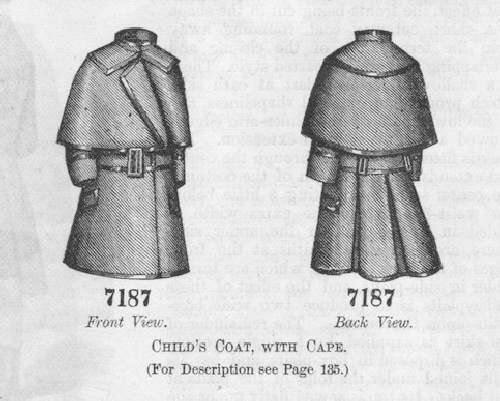
Figure 1.-- This pattern from "The "Deleneator" is an overcoat with a cape. Unlike some soats offered, this was not a garment which could be also worn as a suit. This was an outer garment for cold weather. Here is the front and back view. |

|
This article appeared on page 135-136 of The Delineator September 1880 issue. The illustration was on page 136. As this was a pure outer garment, the word "costume" was not used. "Costime" was comminly used to mean suit. Some garments could be used as both suits and coats. This was an overcoat with an attached capes. Capes were considered stylish in the 1880s and were orn by adults and children.
The Delinleator was an especially important publication for fashion history. Along with the illustrations were very detailed discussions of the contruction, ornamentation, and fabrics. This article appeared on page 135 and page 136 of the Delineator September 1880 issue. The illustration was on page 136.
As this was a pure outer garment, the word "costume" was not used. "Costime" was comminly used to mean suit. Some garments could be used as both suits and coats. This was an overcoat with an attached capes. Capes were considered stylish in the 1880s and were worn by adults and children. It is described as "januty".
The Dileneator suggests this garment for both boys and girls of 1-6 years of age.
No. 7187 Cold winds and rough blasts pass unheeded by the happy wearer of such a jaunty and comfortable little coat as the one here represented. The material illustrated is a copper-brown cloth of seasonable quality, and finish consists of braid bindings. The fronts are double-breasted, and fold under at the closing in broad hems, and are closed nearly to the broad hems, and are closed nearly to the waist-line with button-holes and ivory buttons being also added on the overlapping side. The back has a curved seam passing down the center, and terminates at the skirt between two wide box-plaits, which produce a pretty fullness. There are straps sewed over the under-arm seams at the waist-line, and through them is passed a broad belt of the goods, which is fastened at the front with a buckle. Openings are made at the side of the skirt and finished with broad welts, and these welts, and the belts, straps and edges of the coat are bound with braid. The sleeve is in coat shape, and has a row of braid stitched on it a short distance from the wrist in the outline of a cuff.
The jauntiest accessory of the coat is yet to be described. It is the little cape, which is adjusted about the neck, and has a dart upon the shoulder to fit it perfectly. It is similar to the "coachman's cape" in outline. It extends a little distance below the closing of the coat, and the right end is turned back in little revers, while the left end passes under the revered portion. In the upper and lower corners are worked button-holes, which pass over to corresponding buttons sewed on the opposite side of the coat. A deep, round collar falls over the cape, and a close, narrow, standing collar completes the neck. Both the collars and the cape are finished with bindings of braid to harmonize with the remainder of the garment.
Although the variation in the arrangement of the cape is very simply accomplished, it is a most effective feature, and one that makes the little wearer seem especially attractive. A cunning representation of the coat may be viewed at Child's figure No. 1 on page 135 of this number of Delineator. Sometimes the cape, collars, pocket-laps and bindings will be velvet, and when the weather renders fur a seasonable decoration. It will be applied in bands at the edges. Corduroy, velvet, and all kinds of cloth heavy suit goods, waterproofs and coatings are in vogue for such garments, and sometimes machine-stitching is the only decoration.
We have pattern No. 7187 in six sizes for children from one to six-years of age. If material twenty-two inches wide be selected for the garment, three yards and a-half will be required in its construction for a child of four years. If goods forty-eight inches wide will be chosen, one yard and three-fourths will suffice for the purpose. Price of pattern 10d or 20 cents
There is no indication as to the specific material to be used. The only indication is, "The material illustrated is a copper-brown cloth of seasonable quality...."
The cape is described as similar in style to a "coachman's cape".
Navigate the Boys' Historical Clothing Web Site:
[Return to the Main "Delineator" chronology page]
[Return to the Main "Delineator" page]
[Return to the Main U.S. fashion magazine country page]
[Return tp the Main fashion publishing page]
[Return tp the Main U.S. catalog page]
[Introduction]
[Activities]
[Biographies]
[Chronology]
[Clothing styles]
[Countries]
[Topics]
[Bibliographies]
[Contributions]
[FAQs]
[Glossaries]
[Images]
[Links]
[Registration]
[Tools]
[Boys' Clothing Home]
Navigate the Boys' Historical Clothing Web Site:
[Sailor suits]
[Sailor hats]
[Buster Brown suits]
[Eton suits]
[Rompers]
[Tunics]
[Smocks]
[Pinafores]
